The Missing Cornerstone of the White House: Free Mason Path
The freemason journey to find the missing cornerstone of the White House
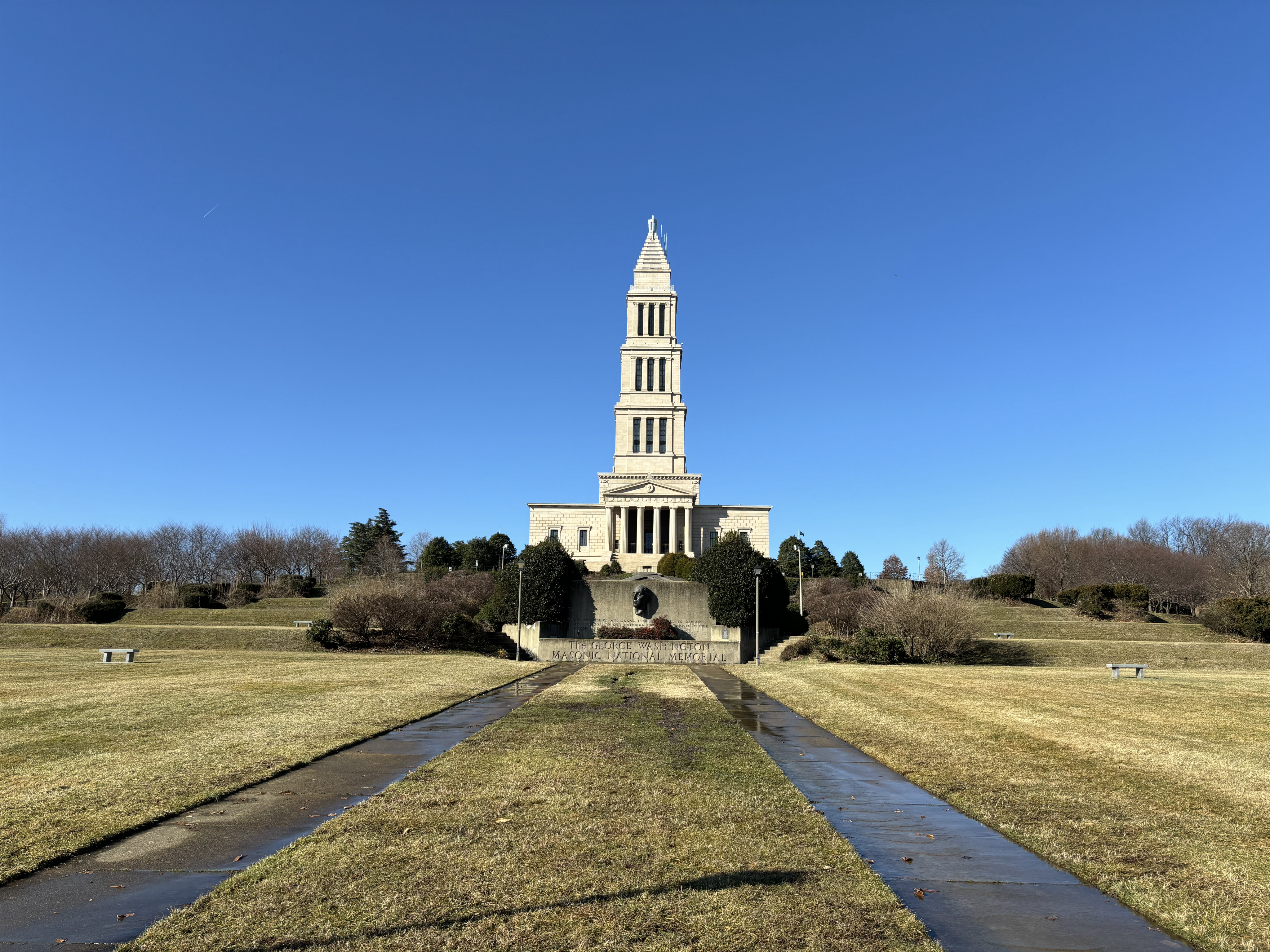
In March of 1792, a famed Freemason ritual of laying the cornerstone of an important building took place. But this building was not just important; it would be the future home of the leader of the president of the United States.
The United States was built by Freemasons; multiple signers of the Declaration of Independence and the United States Constitution were Freemasons. In fact, the first-ever president of the United States was a Freemason, and he was a very important figure in masonry. George Washington was not just the leader of the country but also the Freemasons. His friends were the ones who planned the layout of the future Capital of the country. It would also be named after him, Washington D.C..Washington and his friends attended and led the cornerstone ceremony and went to The Fountain Inn in Georgetown to celebrate. However, when they returned the next day, the cornerstone and its souvenirs were gone and never to be found. It was presumed it was stolen, but by who?
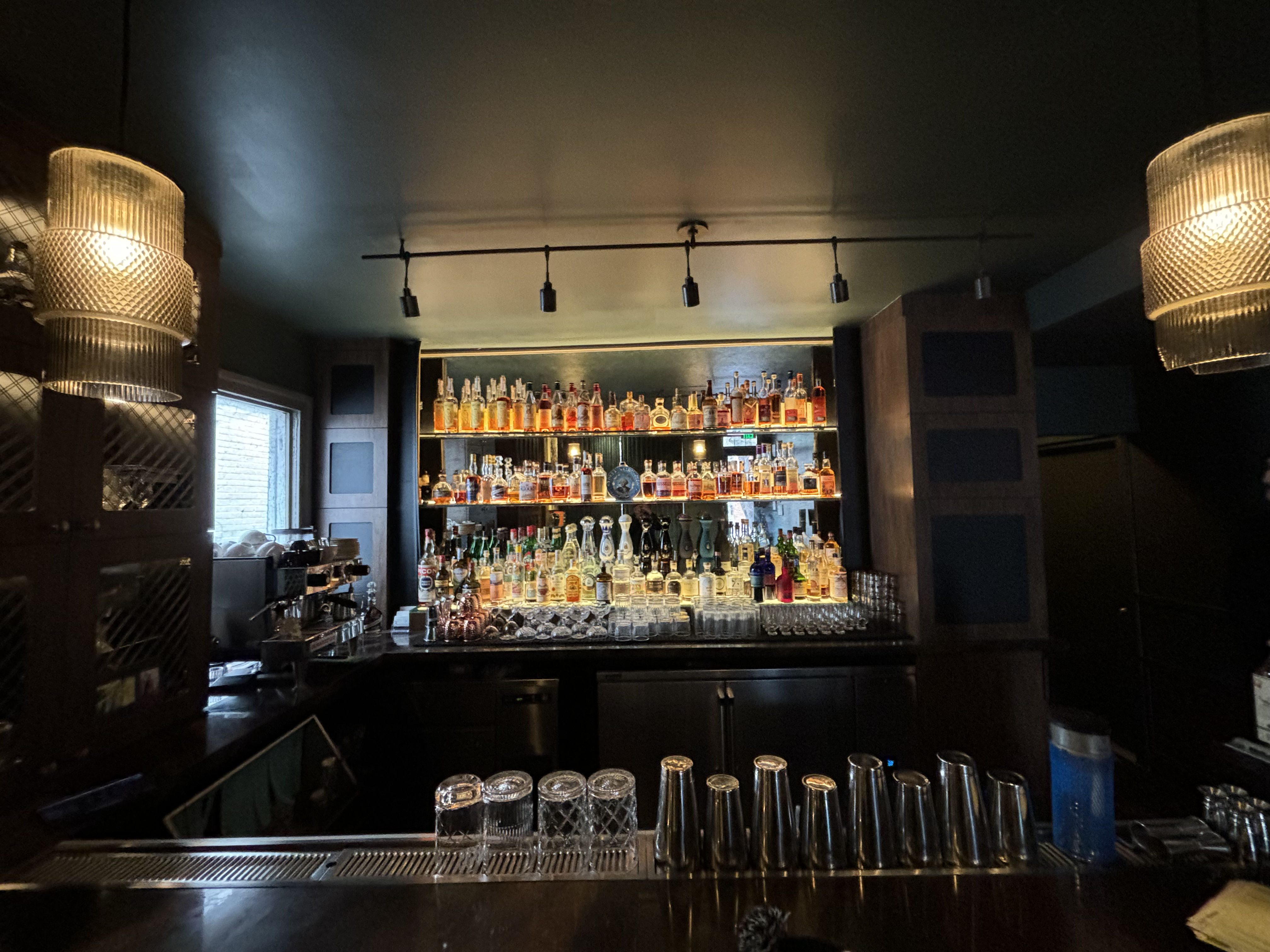
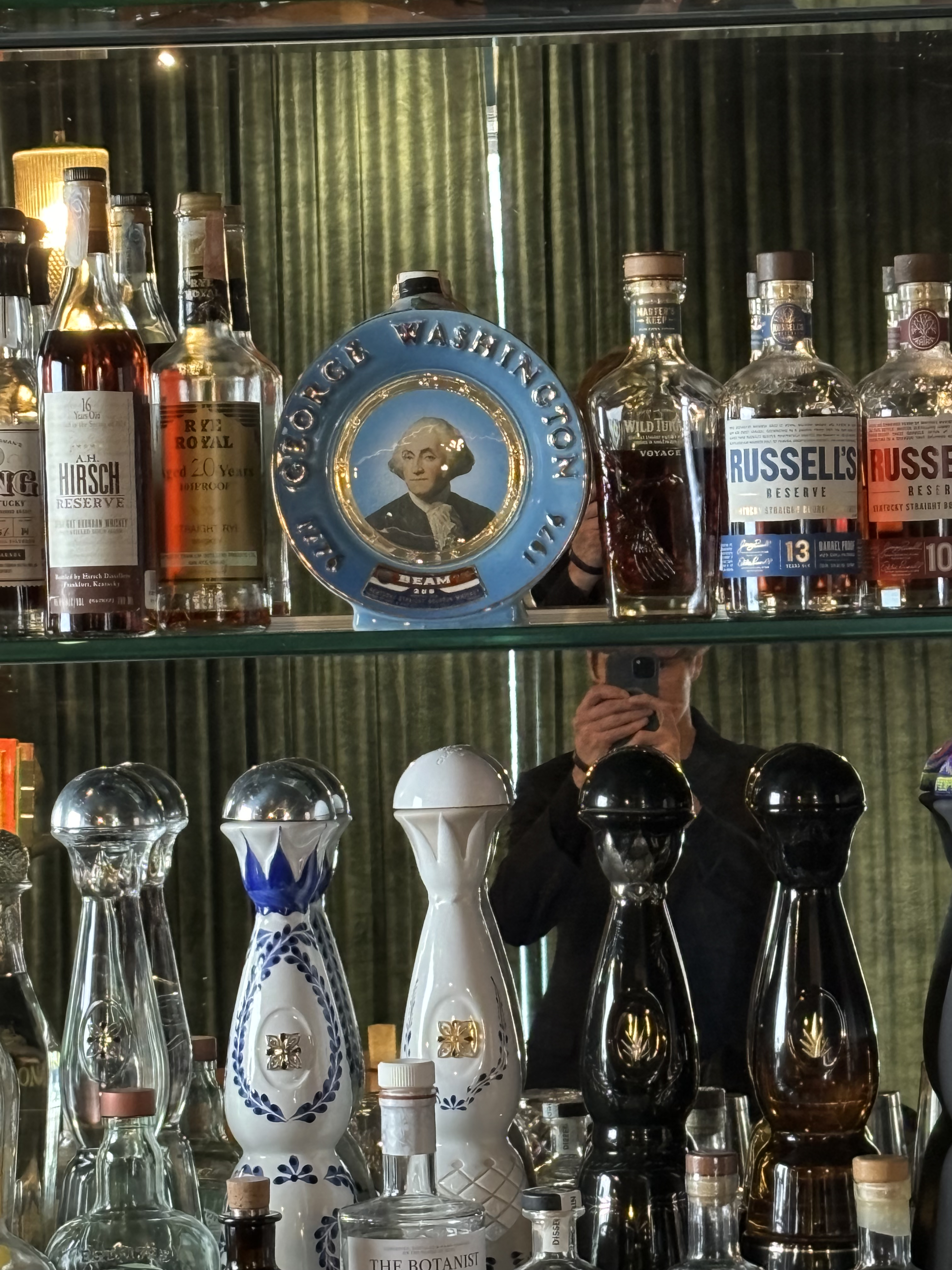
The Fountain Inn was not the same building as we thought.
Since it is not the original building, where is the original building? How can such an important building go so unaccounted for? There are so many questions about why the original building vanished, and the search for answers is a lot more complicated than I thought it would be. The new Fountain Inn had been there for over a century and still has a lot of history inside it. They have a lot of stories and lore to tell the customers, but that building truly has no historical significance other than that it is the continued Inn from so long ago, passed from owner to owner. This area of D.C. goes back farther than the city itself. Georgetown was not a part of Washington D.C. until Congress revoked its independent charter in 1871. When they did this, they started to quickly erase a lot of the history in the city, and that included tearing down the Fountain Inn to be a trash incinerator.
Washington D.C. has started to pride itself on its diverse history.
Slaves were very common in D.C. as many famous politicians had the money to own slaves, and most slaves in D.C. were servants.
Slaves in D.C. were often treated as separate and lesser families; while they were valued, they were never seen as equal and often had to sleep in a worse part of the house in almost a captivity kind of way.
These famous places around D.C. that have survived since that time all talk about the contributions that slaves made to the country. They were very important and valued by the founding fathers. Slaves were often set to be freed in this area when their "owners" died, which was not common during this time.
D.C. is now one of the most diverse cities in the country, and it has become a very popular city to migrate too.
"Transplants" is a term in D.C. meant for someone who migrated to Washington D.C. for work. It was very impressive to meet people from Boston, New York City, and elsewhere who all know Washington D.C.'s history as if they grew up here, and the culture that has been created is truly like nowhere else.
These people allowed me to learn so much about the city I grew up in, and learn the historical meaning of the places I was walking through.
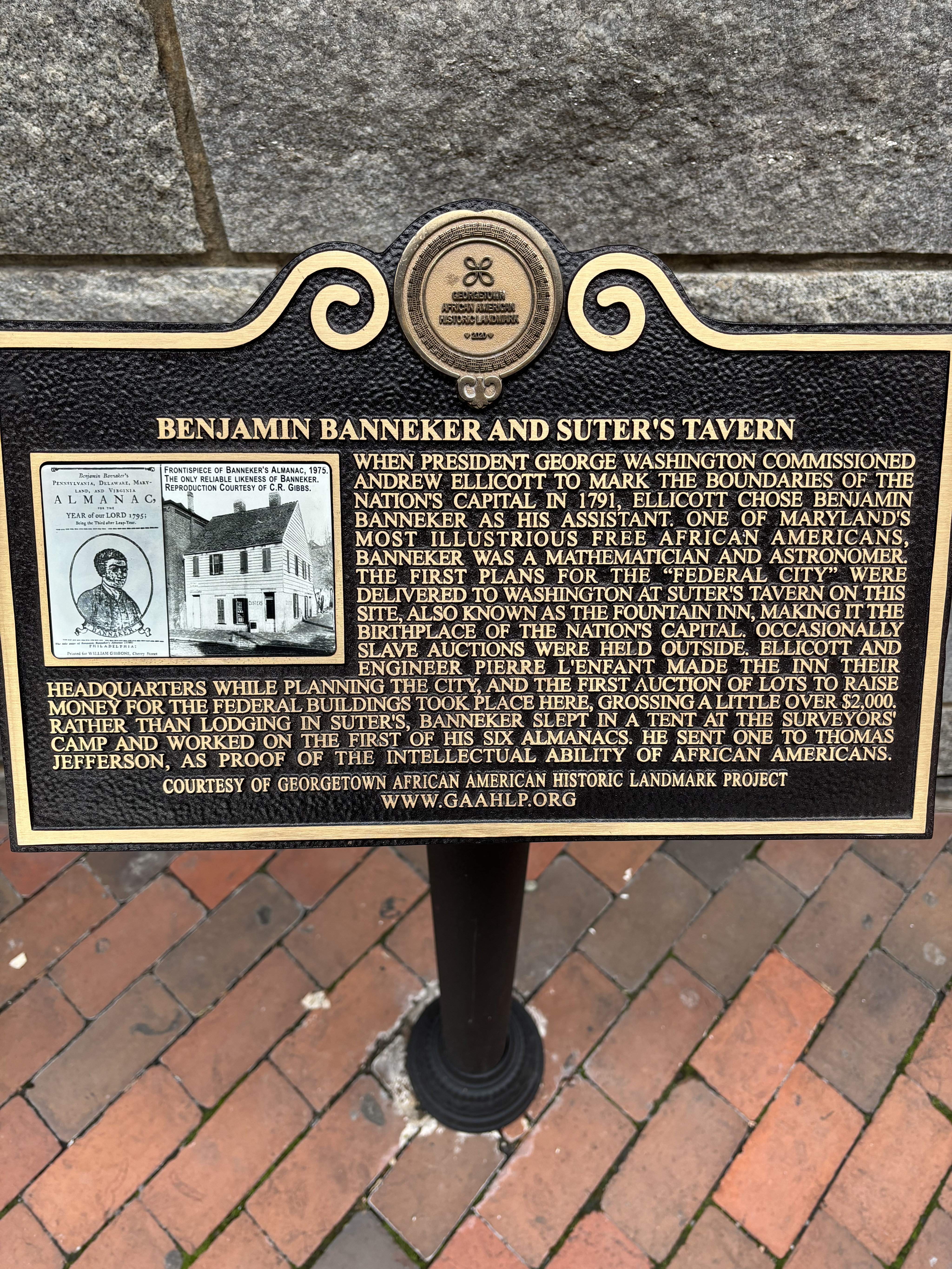
After many conflicting reports, I made an educated guess that the site of the old garbage incinerator was where The Fountain Inn (aka Suter's Tavern) was.
I came to this conclusion because of its close proximity to the Potomac River, just like Washington's journals described, and its close proximity to many other old historical sports from this time period.
Everyone important knew everyone that was important back then. This was because essentially the same large group of people were responsible for creating the country. George Washington's group was certainly a part of that. What is more interesting is the amount of time George Washington seemingly spent in the area. As kids we are taught that D.C. was made in his honor and as the place for future presidents to live. We were never taught how often the president visited the home of future presidents.
It makes sense, though; George Washington had his home very close to D.C. Mount Vernon was the first president's plantation. Mount Vernon was very close to D.C. he even had many friends living in the area next to D.C. in Alexandria.
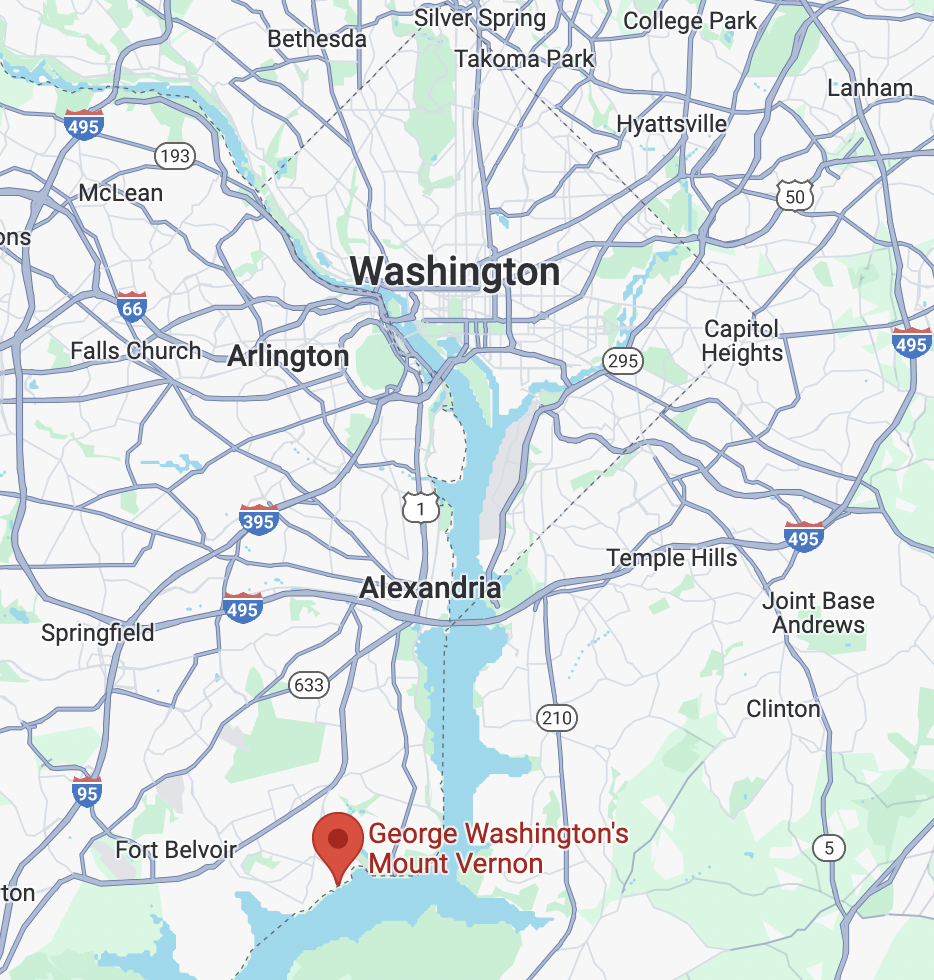
Suter continues to be the main person in all of this, and that is very understandable.
He was practically best friends with George Washington, the country's most important person. Washington was responsible for the Freemason's involvement in the planning of D.C.. This cannot be directly proven, but with the number of people in Washington's group that were Freemasons and with Washington being the head of the Freemason movement at the time, it is logical to suggest that he was the one responsible for the amount of Freemason involvement in the country.
I am now on the way to the City Tavern, the City Tavern was the tavern that Suter moved to after he ended his time owning The Fountain Inn.
It was built by Clement Sewell, George Washington's stepson.
This tavern hosted multiple founding fathers like Thomas Jefferson and, obviously, Washington, but most importantly acted as the White House for a short time when John Adams visited D.C. before the actual White House opened. John Adams had a famous speech in the "Long Room", he said “the utmost harmony and conviviality prevailed,” and he gave the toast, “Georgetown - May its prosperity equal the ardent enterprise of its inhabitants, and the felicity of their situation.”
It has since remained very important; John F. Kennedy had his wife redesign the interior of the building. Jackie Kennedy loved French interior architecture and had the ballrooms redesigned to look like it would if it were in France.
Since then, multiple presidents have had major to minor involvement at the Inn. Many presidents have thrown parties and celebrations, including Ronald Reagan.
It is still an important building, with it commonly being rented out by congressmen and still, although less frequently, the White House. It is a very exclusive club and very rare to get a tour of the building.
As cool as a place as it was, nothing added to the cornerstone story.
This is because the events leading up to the cornerstone being stolen and Suter moving taverns are not connected.
Yes, there are many of the same people and figures from before, but now these people are focused on the country instead of starting the country. This means that any prior motives and stories cannot line up properly without strong evidence stating otherwise.
At the end of the video, I mentioned the next stop was the Freemason temple, but that ended up not being true.
Before I gave up in Georgetown, I was told I needed to go to The Stone House. The Old Stone House is the oldest building that has not been changed in Washington D.C.
It has not been torn down yet because of old folklore spread by the residents of Georgetown. It has been said that Suter was renting a room in the building and that Washington and L'Enfant had meetings with Suter at the Old Stone House. It was then said that George Washington used this building as his headquarters, and a sign above the door said "George Washington's Headquarters".
This was proven untrue after the house was saved. Unfortunately, they were strangely not open even when the website said they were, and there was never any response to my calls or emails.
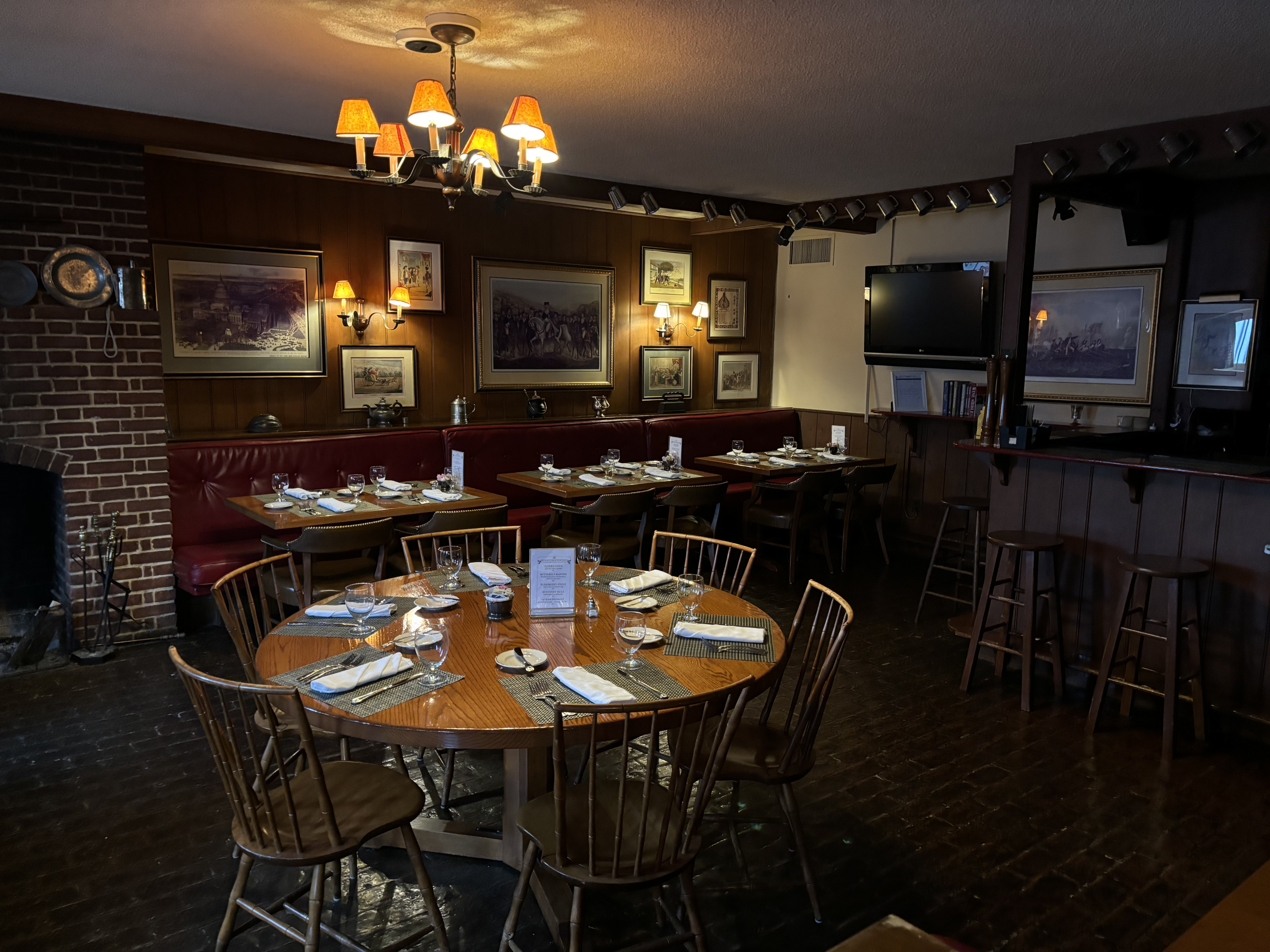
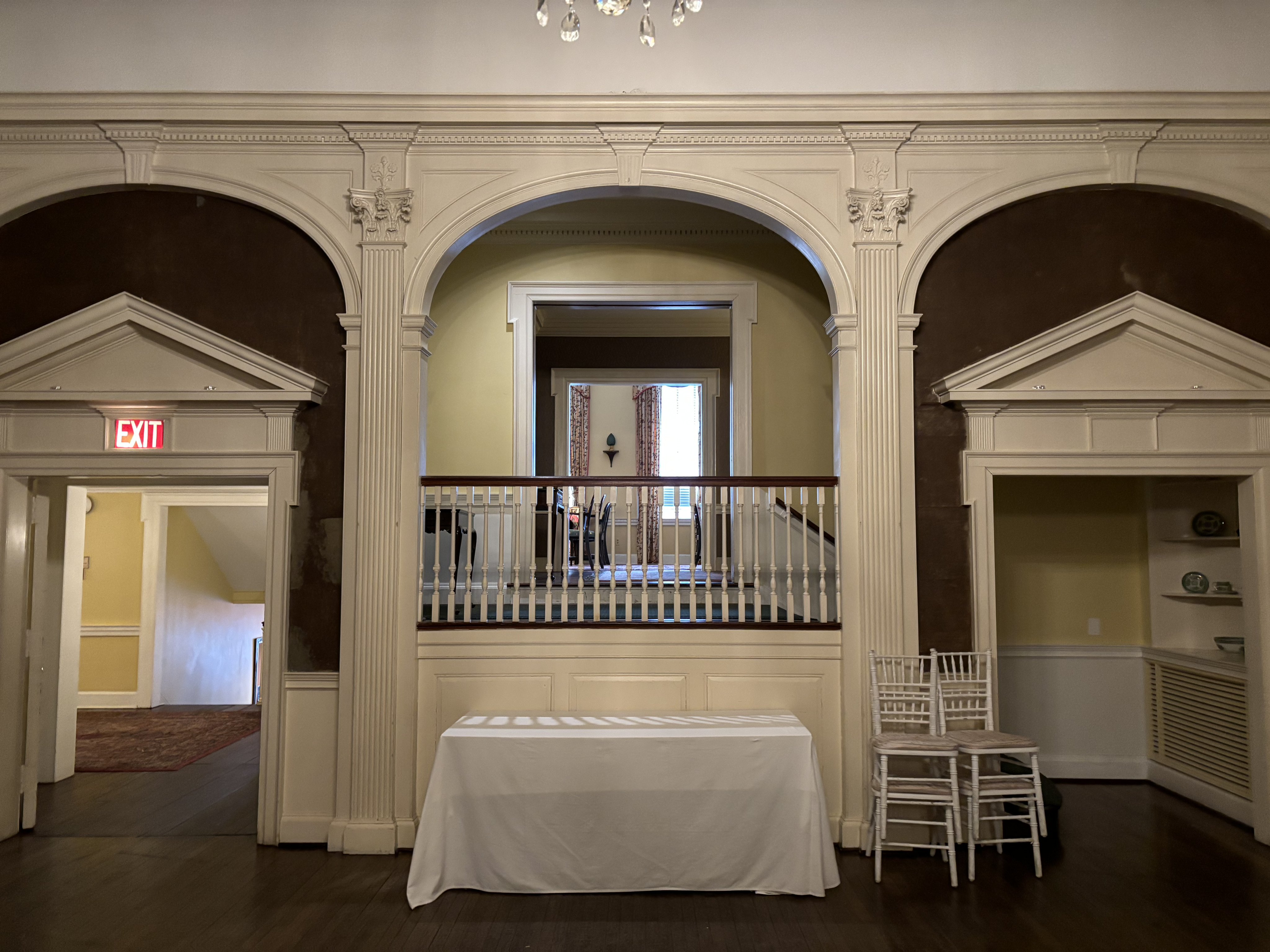
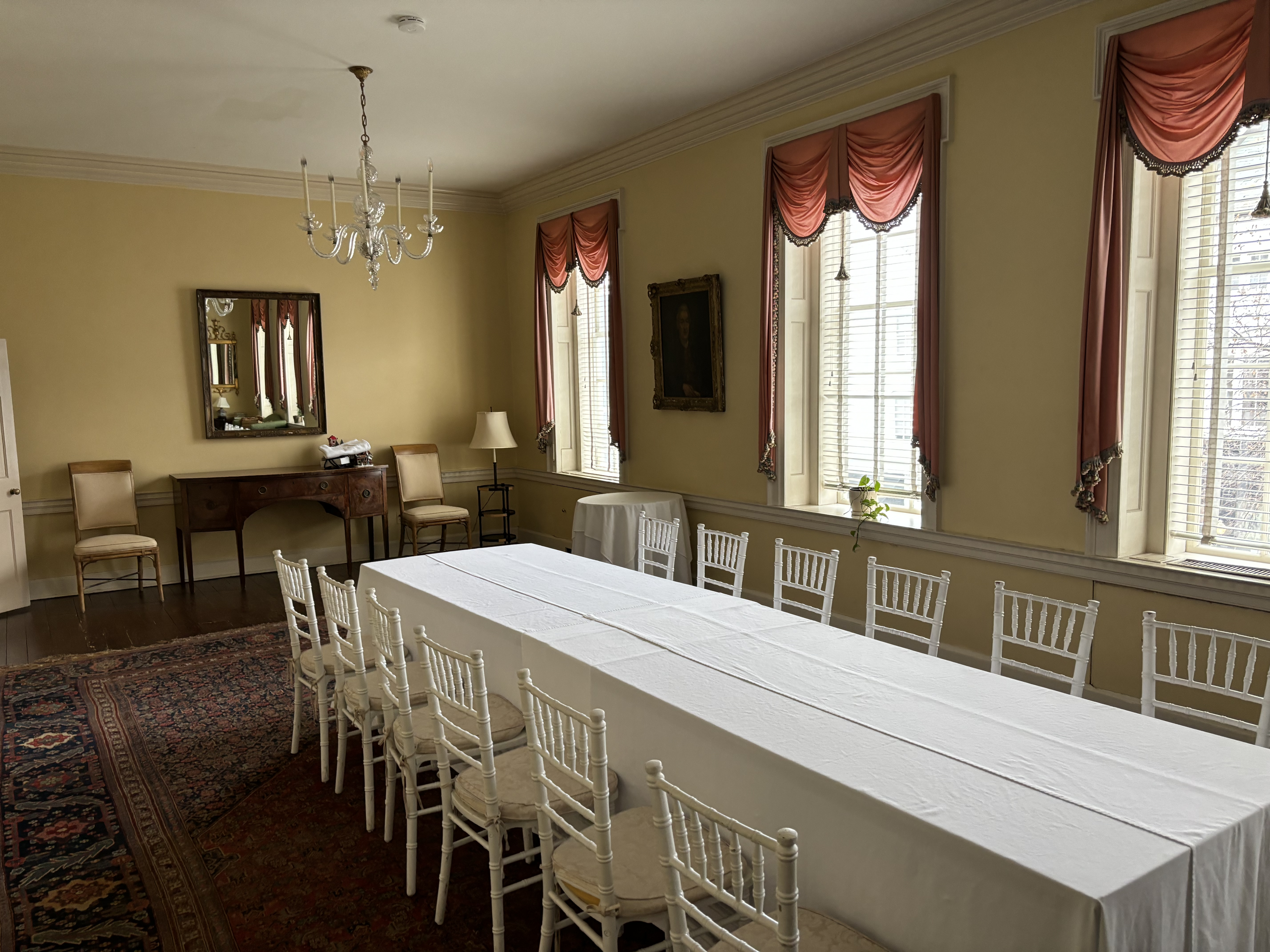

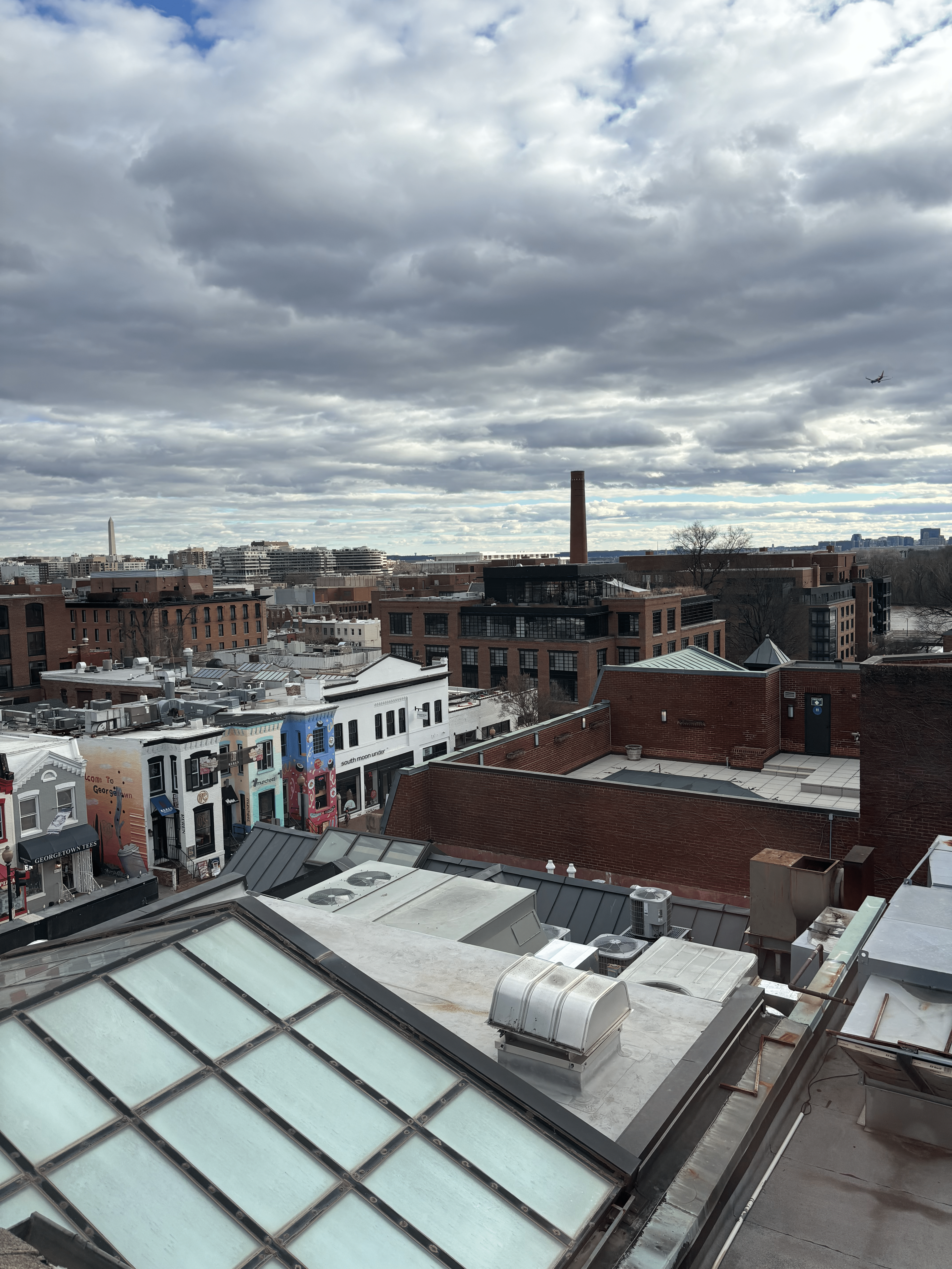
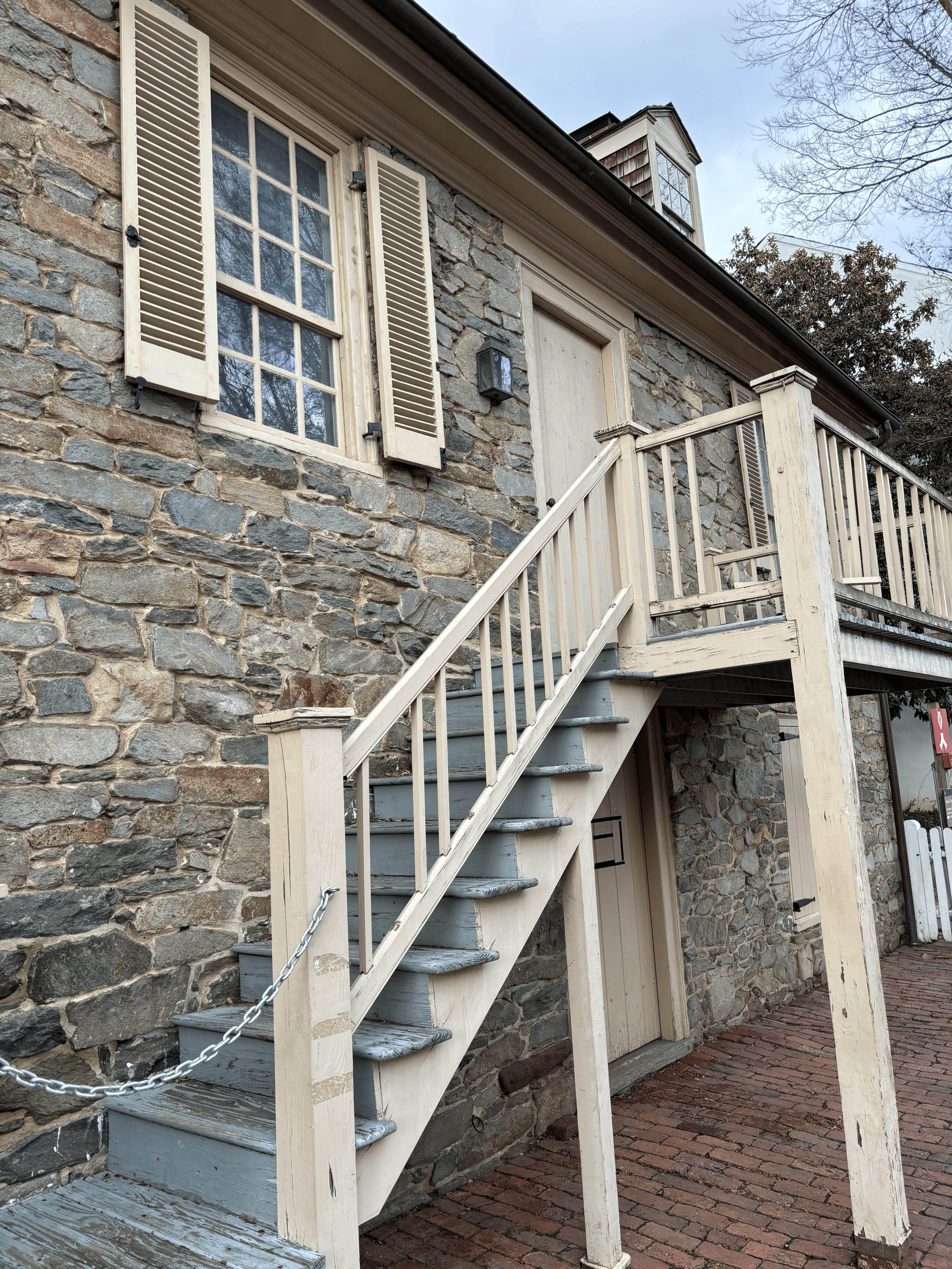
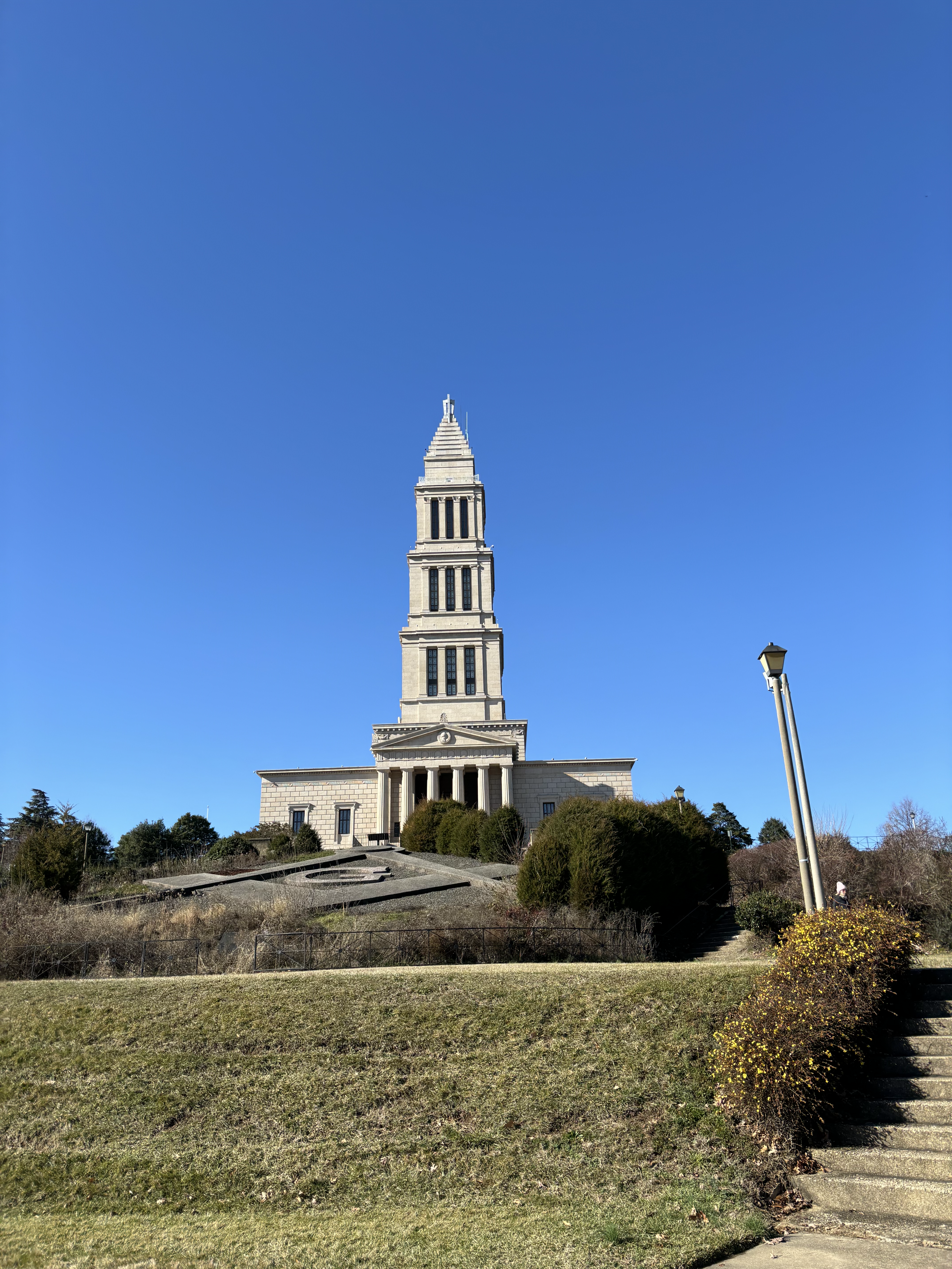
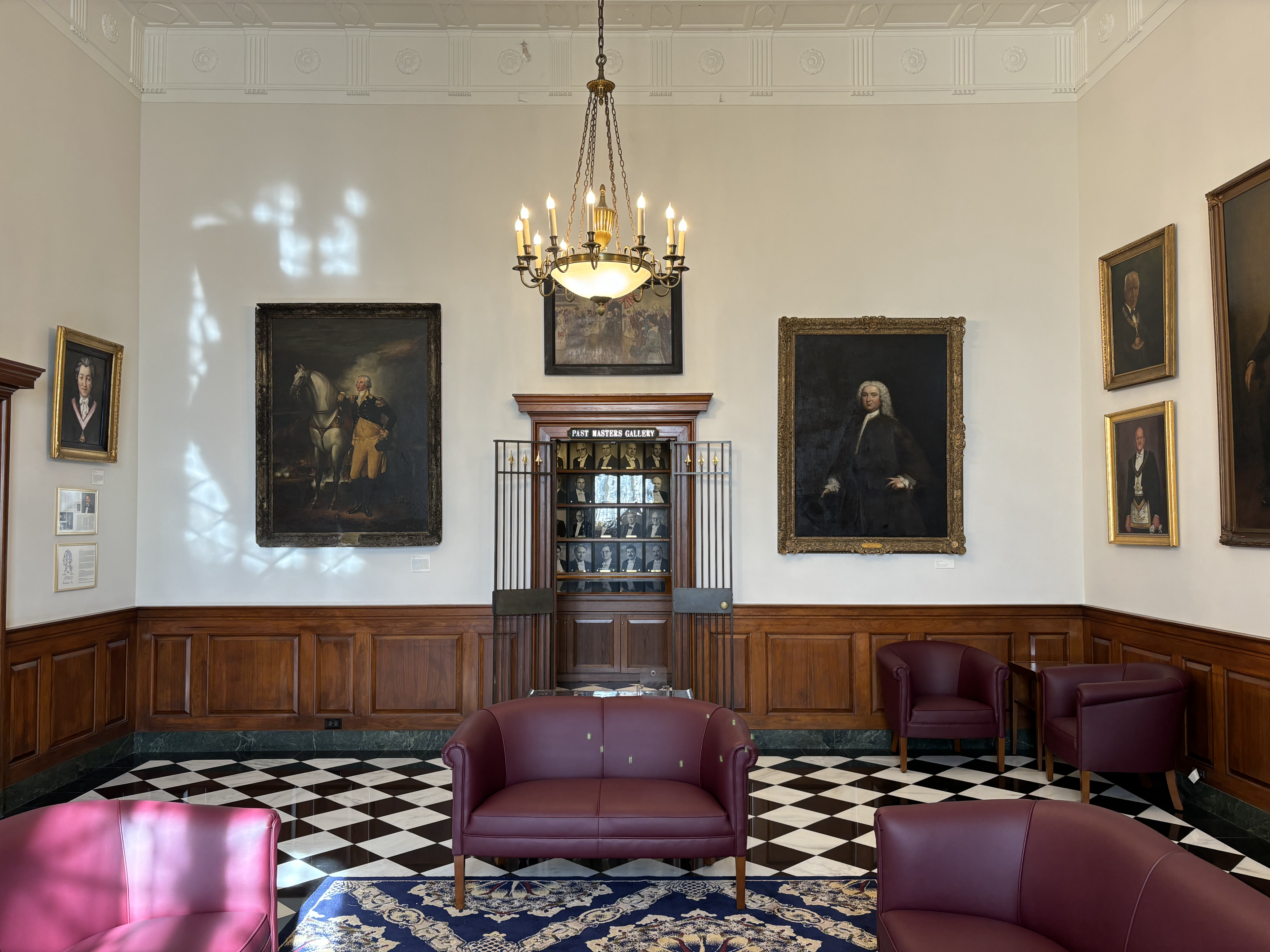
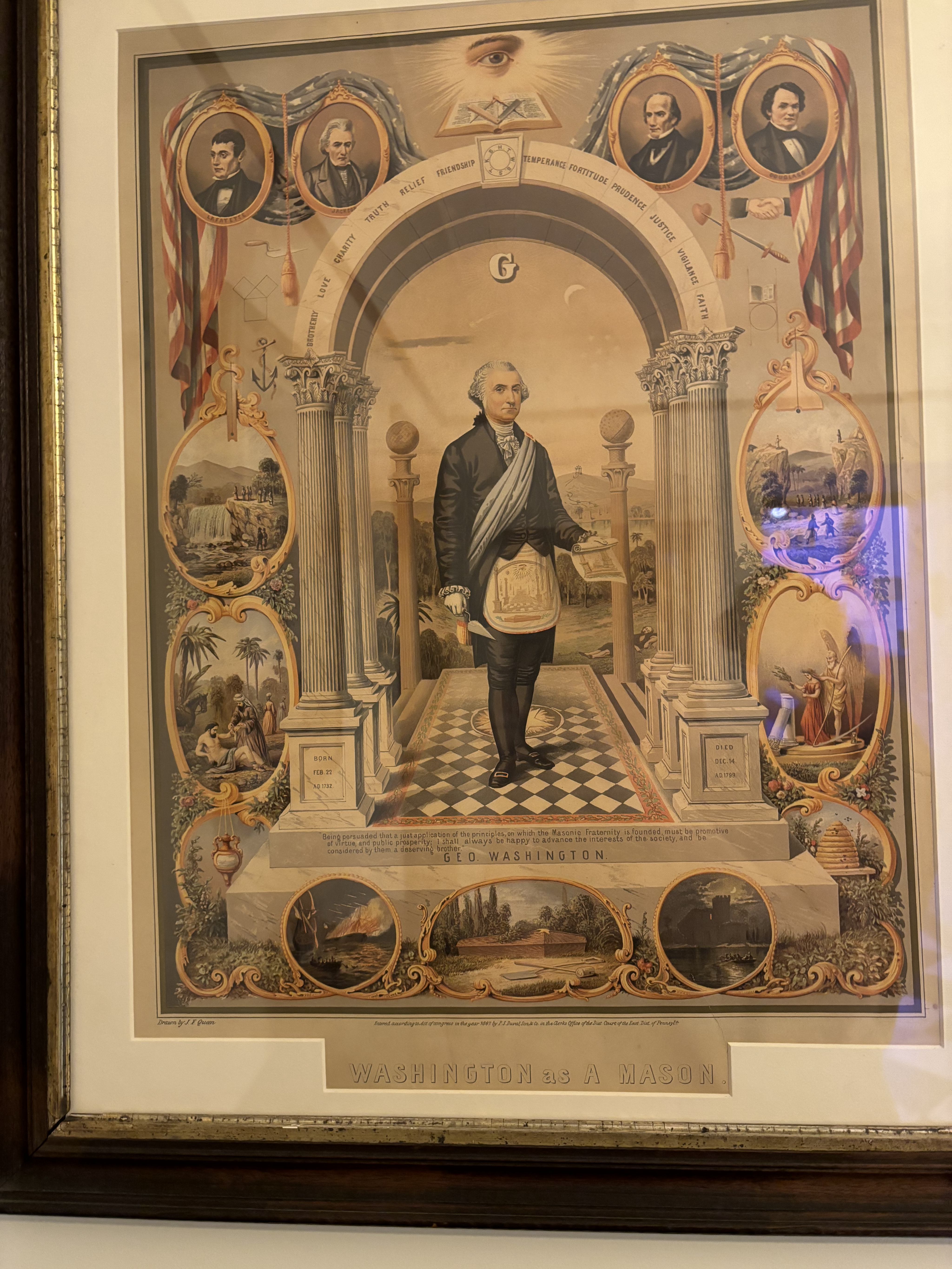
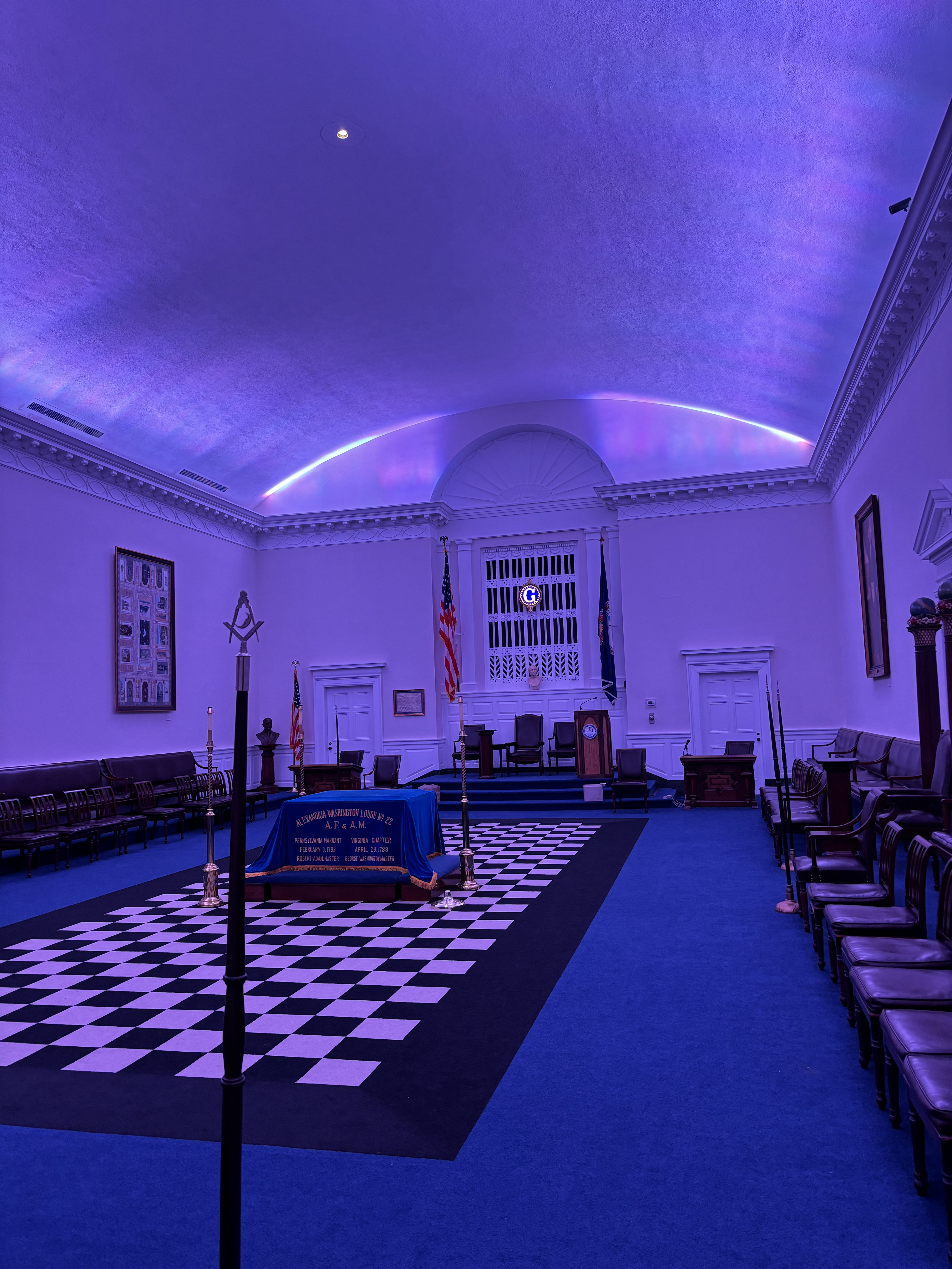
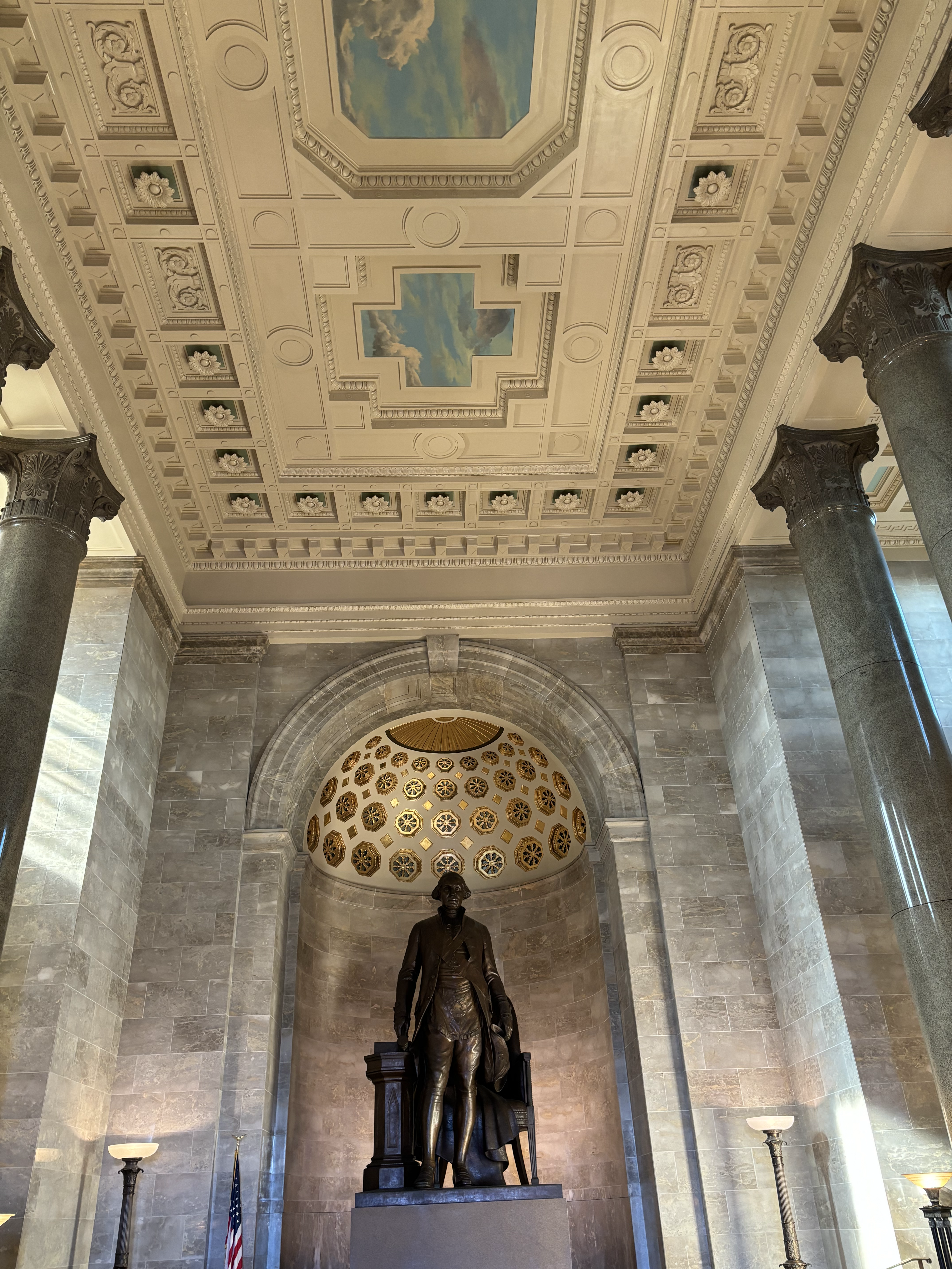

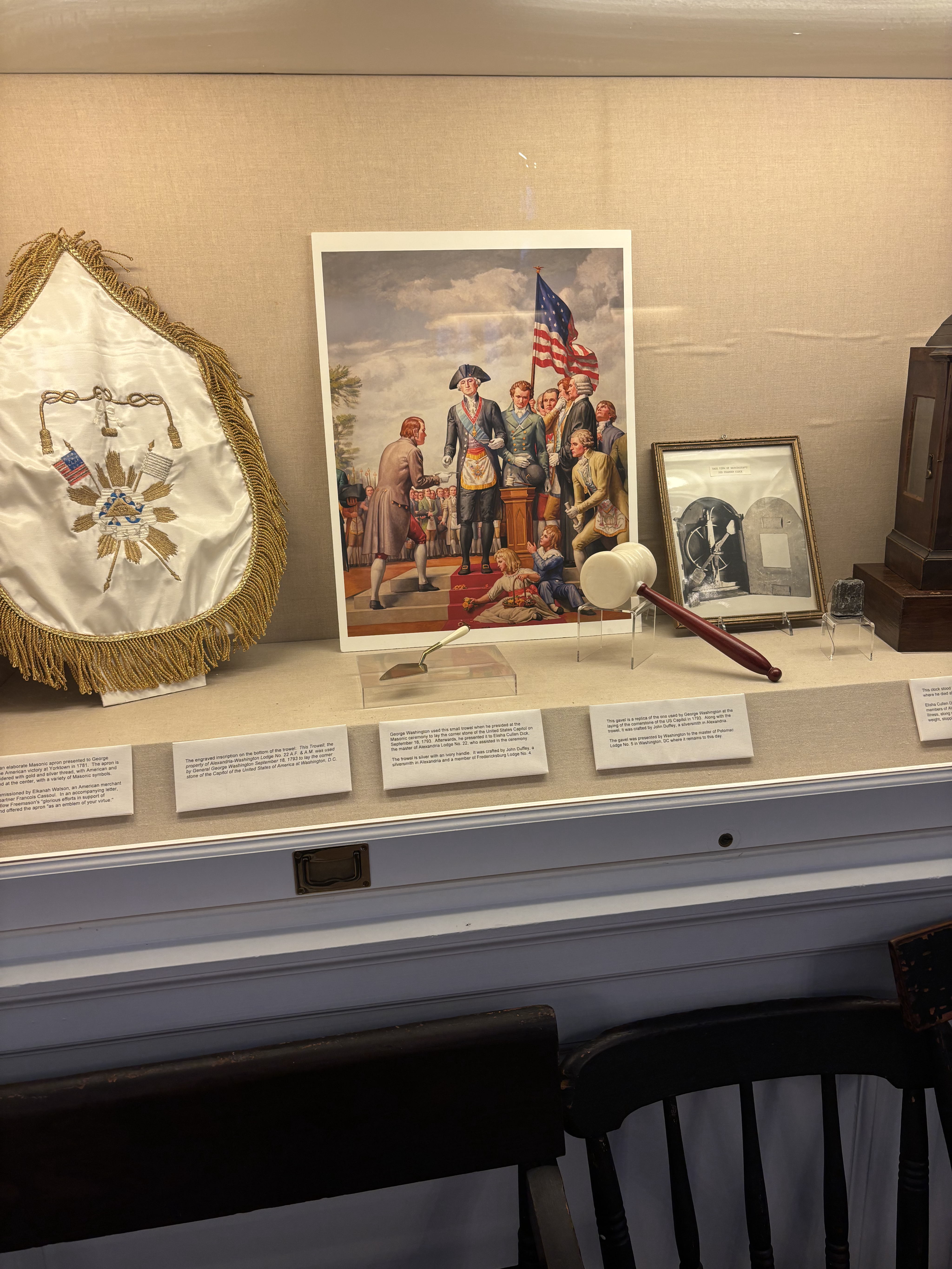
My last stop was the root of everything, the Freemasons.
The Freemason temple had construction begin in 1922, and fully finished in 1970. Even with its rater, not old age, it still has every major George Washington masonic artefact known to man. It is also home to plenty of other historical American and, in some cases, global artefacts, many of which were hidden from the public. It even includes a key to the Bastille.
The tour explained how important the cornerstone ceremonies are to Freemasons and even had a huge mural dedicated to the one at the Capital.
There were many important pieces of Washington's history, including a trove that he used at different cornerstone ceremonies and his apron* is displayed as well. *all freemasons are given an apron when initiated into the masonry
The building is still used for meetings today and has many different meeting spaces around the temple. They are massively different in size, and all Masonic Lodges that use the temple have access to all of the rooms.
There is one very special room that includes the only ever realistic portrait of George Washington; he only agreed to William Joseph Williams to do a portrait if he made him look how he actually looked like.
The room also includes the original chair Washington sat in and is still used today for meetings.
The reason I went here in the first place was not for the tour, although it was very informational; it was to get a response from Shawn Eyer, a spokesman for the temple, and after a long discussion, he finally agreed to do an interview!
The Interview took place at the Lee Fendall House in Alexandria, Virginia.
It was home to Revolutionary War figures but has had important people living there since then, including John L. Lewis, who was a mine worker union leader and was featured on the cover of Times Magazine twice. He was a very powerful and even more controversial figure; he campaigned for better worker rights in Congress.
Clearly, there is more to the story on the Freemason side, but there must be other avenues to explore in the search for such an important piece of history.
There are many other angles on where it could have gone, from it being still in the White House to a random civilian carrying out the act. As someone who loves history I hope its the latter and that I find some new piece of evidence in the future to go on another path to find the missing cornerstone of the White House.
